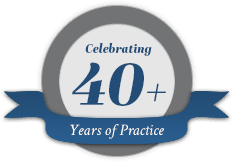Bus drivers are injured frequently. If you are a bus driver who has been injured on the job, you have specific that protect you. These protections include the right to seek workers’ compensation benefits and, in some cases, a third-party personal injury claim.
If you’ve experienced one of the following injuries, take action and get the workers’ compensation you deserve
Lower Back Injury
Back injuries to bus drivers are very common. With so much sitting and bouncing it’s no surprise so many bus drivers experience back injuries, especially those who have been working for years.
- Common types of low back injuries include herniated discs, muscle strains, and degenerative disc disease.
- Common causes include constantly getting up and down, prolonged sitting and bouncing, worn out and unsupportive equipment and company requirements involving heavy luggage, and passenger management.
- Low back injuries can cause chronic pain and mobility issues that can make the job painful and eventually impossible.
- L&I recognizes low back injuries, but since they are often subjective, they get contested by Labor and Industries insurance adjusters . It should be obvious to them, but you must be able to prove that the job caused the workplace injury. Similarly, in personal injury claims, you must be able to prove causation.

Injuries from Bus Accidents
Severe bus driver injuries are caused by accidents and often lead to long-term consequences.
- Severe injuries caused by accidents include spinal cord injuries, traumatic brain injuries (TBI), bone fractures, and whiplash.
- With so many hours on the road, bus drivers are more exposed to motor vehicle accidents than the majority of other professions. Other drivers are often impaired or distracted and act erratically. Passengers can be unmanageable. Pedestrians and animals can appear to come out of nowhere.
- Depending on the severity of your injury, a bus accident can have a massive impact on your career future. Your injury may end with a long-term or permanent disability that prevents you from returning to work.
- L&I recognizes bus accidents as significant and must provide you workers’ compensation if the accident occurred while you were performing work-related duties. If you drive a bus for work and get into an accident, you have an L&I injury and L&I should pay, regardless of fault.
- Additionally, you may also have a third-party personal injury claim if you can prove the negligence of another driver or entity. You can have both an L&I claim and a third party claim.
Violence from Passengers
Bus drivers meet many strangers every day, some of them unruly and even unstable. It’s not uncommon for bus drivers to sustain physical and psychological injuries due to altercations with such passengers.
- Physical altercations with passengers can leave bus drivers with physical injuries, including bruises, cuts, fractures, and worse, as well as psychological trauma.
- When you drive so many strangers every day, you’re bound to run into some unruly and even unstable passengers who can become violent for a variety of reasons.
- Injuries sustained by violent passengers can result in complicated and long-term recovery, impacting job performance.
- In addition to a workers compensation claim, if you are intentionally injured you can also file a third-party claim.
Shoulder Injuries
Common and painful injuries to bus drivers are shoulder injuries caused by repetitive and physically demanding tasks.
- Some types of shoulder injuries include rotator cuff tears, impingement syndrome, and tendinitis. Injuries occur due to lifting, repetitive door opening, assisting disabled passengers, and difficult steering wheels.
- Repetitive injuries may actually be an occupational disease.
- Shoulder injuries may require surgery or therapy and can even lead to chronic pain that eventually affects your ability to perform your job duties.
- L&I should cover on the job shoulder injuries, and you may also have a third-party personal injury claim if the injury occurs due to faulty equipment or the negligence of a third party. You must provide more likely than not evidence of negligence by a third party to succeed with a third-party claim.
Workers’ Compensation Claims for Bus Drivers
Workers’ compensation in Washington State is designed to provide benefits to employees who are injured on the job, regardless of fault.
If you are injured while performing work-related duties as a bus driver, you are eligible for workers’ compensation benefits. These benefits can cover medical treatment, a portion of your lost wages, new job training, and disability benefits.
File your L&I claim now. Don’t wait. The longer you wait, the less likely you are to receive workers’ compensation benefits.
There are three ways to file a State Fund claim for L&I:
- The best way to file a claim is to see a doctor, and in their office, you and they will fill out the Report of Accident (ROA) form together. The doctor should have the forms, and they should file this paperwork. The important part is to see a doctor who listens, cares, and wants to help you with your L&I claim.
- File Online via L&I’s FileFast tool.
- File a claim by phone at 877-561-3453 (FILE).
Please note you cannot file a claim at the nearest L&I office. Local offices are closed to the public and are not allowing in-person claim filings.
How do I file a claim with a self-insured employer?
If your employer is self-insured, you must get a Self-Insured Accident Report (SIF-2) form from human resources and take it to the doctor. Or the doctor can get and file the form online: Provider’s Initial Report (PIR) (F207-028-000). You can still get workers’ compensation and have an L&I claim even when you have a self-insured employer. Here are some instructions from self-insurance for accident reporting.
Personal Injury Third Party Claim for Bus Drivers
In addition to workers’ compensation, you may have the option to file a personal injury claim if a third party’s negligence caused your injury.
For example, if you were involved in a bus accident caused by another driver, you might pursue a personal injury claim against that driver. Personal injury claims can compensate for damages not covered by workers’ compensation, such as pain and suffering and total lost wages.

Can You Have Both Claims at the Same Time?
You can pursue both workers’ compensation and personal injury claims simultaneously, for example:
- If you were injured in a bus accident caused by another driver’s negligence, you may have both a third party claim against that driver and an L&I claim.
- A claim could be made against the manufacturer if your injury resulted from defective equipment.
- In cases of violence from passengers or coworkers, you can sue them for an intentional injury and file a workers’ compensation claim.
Third-Party Claims and Bus Driver Injuries
When you have both a personal injury claim and an L&I claim, the personal injury claim is called a third-party claim. A third-party claim is an L&I and a Personal Injury claim arising from the same facts.
If you are an older bus driver, you may be eligible for an L&I Pension
Bus drivers who have been injured on the job and cannot return to any substantial gainful work due to their injuries may be eligible for a pension under the state’s workers’ compensation system.
The Washington State workers’ compensation program includes provisions for pensions in cases of permanent total disability. Here’s how it works:
- To be eligible for a pension in Washington State, you must be unable to perform any gainful employment due to your injury and be deemed permanently and totally disabled.
- Age strongly influences pension eligibility, especially for older workers who may face more significant challenges in returning to work and in retraining or finding alternative employment.
- Any work-related injury or illness that results in permanent total disability could potentially qualify a worker for a pension. Back injuries are the most common, but eligibility for a pension is not limited to any specific type of injury.
- A workers’ compensation pension provides monthly payments for the remainder of your life based on a percentage of your wages at the time of injury.
- The process of applying for a pension involves medical evaluations and documentation to establish the extent and permanence of the disability. Your workers’ compensation attorney can assist in navigating this process.
- Receiving a pension may affect eligibility for other benefits like Social Security Disability Insurance (SSDI) and union benefits. It’s essential to understand how these benefits interact.
For bus drivers in Washington State who have sustained work-related injuries, it’s crucial to explore all options, including the possibility of a pension for permanent total disability. Legal guidance can be invaluable in understanding rights, evaluating eligibility, and pursuing the appropriate claims under the state’s workers’ compensation system.
Contact Us for Support and Guidance
We recognize the challenges faced by bus drivers who suffer from work-related injuries. We are committed to standing up for your rights as an injured bus driver and ensuring they receive the compensation they need and deserve. If you are a bus driver who has been hurt on the job, don’t face it alone. Contact us for a free consultation.









